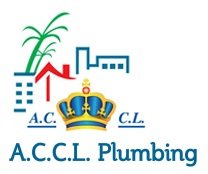Frozen pipes can be a homeowner’s worst nightmare, causing costly damage, disruption, and even health risks. When water freezes in pipes, it can expand and cause pipes to burst, leading to flooding, structural damage, and mold growth. In this article, we’ll explore the dangers of frozen pipes, how to prevent them, and what to do if you do experience a frozen pipe.
The Dangers of Frozen Pipes
– Pipe Bursting: Frozen pipes can burst, causing water to flood your home and leading to costly repairs.
– Water Damage: Frozen pipes can cause water damage to walls, ceilings, and floors, leading to structural issues and mold growth.
– Health Risks: Frozen pipes can lead to mold growth, which can cause respiratory problems and other health issues.
Causes of Frozen Pipes
– Cold Temperatures: Prolonged exposure to cold temperatures can cause pipes to freeze.
– Poor Insulation: Poorly insulated pipes in unheated areas, such as the garage or basement, are more susceptible to freezing.
– Clogged or Blocked Pipes: Clogged or blocked pipes can cause water to accumulate and freeze.
Prevention and Protection
– Insulate Exposed Pipes: Insulate exposed pipes in unheated areas, such as the garage or basement, to prevent freezing.
– Disconnect and Drain Hoses: Disconnect and drain hoses from outdoor faucets to prevent freezing.
– Seal Drafts: Seal drafts and gaps in walls, floors, and ceilings to prevent cold air from entering.
– Keep Your Home Warm: Keep your home warm, especially if you’re going to be away for an extended period.
– Let Cold Water Drip: Let cold water drip from faucets served by exposed pipes.
What to Do If You Have a Frozen Pipe
– Turn Off the Water Supply: Turn off the water supply to the affected area to prevent further damage.
– Thaw the Pipe: Use a hair dryer or towels soaked in hot water to thaw the pipe slowly and safely.
– Call a Plumber: If you’re unable to thaw the pipe or if it has burst, call a plumber to assist with repairs.
Conclusion
Frozen pipes can be a serious issue, but with proper prevention and protection, you can minimize the risk of damage and disruption. By insulating exposed pipes, disconnecting hoses, sealing drafts, and keeping your home warm, you can help prevent frozen pipes. If you do experience a frozen pipe, act quickly to thaw the pipe and prevent further damage.

